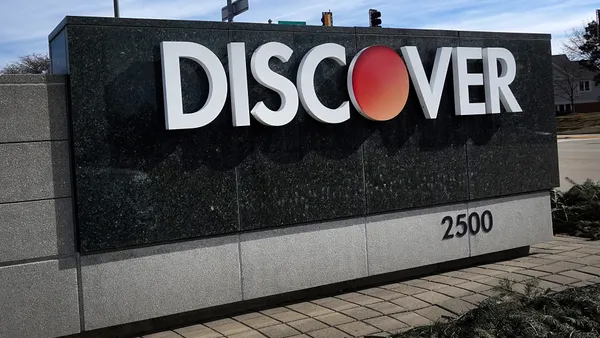The digital transformation, particularly mobile, has changed payments in nearly every way. Meanwhile, demand for personalized experiences continues to rise, and AI and machine learning capabilities focused on the customer experience are now emerging at a stunning rate.
As consumer payment expectations continue to transform e-commerce experiences, billers should consider which legacy processes should be put to pasture and which emerging trends should be adopted.
To help companies focus their efforts, here are some of the top trends that may matter most to consumers—and signal ways billers can improve the customer experience.
Top trend: Improving payment experiences
Nearly every business across every industry is focused on improving the customer experience. Payments have been a critical part of that, yet advances have mostly centered on lifestyle activities. For example, consumers now make seamless in-app payments for shopping, ride-shares and food delivery, and swap money with friends in a few taps via P2P transfers.
Bill payments, however, have been slower to evolve. Consumers want the same convenient, flexible payment experiences to manage their monthly bills and the customer experience is becoming increasingly more important.
Unfortunately, according to a recent study conducted by Datos Insights and sponsored by PayNearMe, The Value of Payments Data: How Financial Institutions Can Rethink and Prioritize Data-Based Decision-Making, more than half of financial institutions surveyed do not measure customer satisfaction as it relates to their payments capabilities. As one vice president of consumer lending put it, “We generally judge our consumer payments effectiveness by the number of complaints we receive.”
For billers, optimizing the customer payment experience should be a top priority to help improve on-time payments and reduce delinquency risk. What does a best-of-breed bill payment experience look like? It should deliver features and benefits such as:
● Expanded mobile payment capabilities – Every financial institution in the aforementioned study offers online access to its payments platform, but many have no mobile offering, do not use IVR and don’t allow customers a way to get to the platform via email or SMS. Those are common channels used in mobile banking as well as other mobile services, so consumers expect this same access when making a loan payment.
● Frictionless process – A well-designed mobile bill pay experience eliminates the pain points of remembering login details, navigating complicated biller sites or calling to make payments. Customers should be able to pay a bill in seconds, with only a few simple steps.
● Helpful reminders – 63% of consumers say that receiving a text or email reminder about a billing due date would make it easier to pay on time. Digital bill pay reminders can be even more helpful by including secure ‘smart links’ that take payers directly to their personalized payment screen.
Bill payment experiences should strive for parity with e-commerce counterparts that have mastered the art of balancing simplicity, security and convenience.
Top trend: Adopting AI to improve business outcomes
AI and machine learning (ML) have suddenly become mainstream, with new tools steadily emerging for both developers and end-users. Billers that adopt AI-powered processes may be positioned to significantly improve profitability.
For example, AI can automate tasks to speed payment processing, while reducing errors and costly manual work. ML models can turn payments data into predictive insights for taking action to minimize risk, declined payments and more.
Assisting with fraud prevention will also be a game-changer. AI continues to evolve for identity verification and fraud detection to help financial institutions safeguard against increasingly sophisticated cyber threats. From preventing application fraud, to detecting what may be ‘friendly fraud’ chargebacks, to avoiding breaches of sensitive customer data, AI will play a powerful role in the future of payments.
Within the next several years, we envision a future where AI adoption drives substantial results and is used to optimize and enhance the customer experience.
Top trend: Simplifying payments with personalized links
The pandemic sparked a surge of innovation in contactless payments, and now personalized links for payment are becoming the norm. Links have also gotten smarter with personalization, offering one of the simplest ways to pay for goods and services—and now regular bills.
In some cases, the consumer initiates the transaction by texting a code to receive a personalized link for payment. Paying for parking is a popular example. People can simply send a text to the parking app's code number, then receive a link to enter their license plate and zone numbers, and then pay for the space.
Billers are now adopting a similar model that makes payment easy for customers. The business can automatically or manually push a secure, unique link from their payments platform to a customer’s mobile device via text or email. The customer can then tap their personalized link to open a payment screen and choose their preferred way to pay.
Pay-by-link is a powerful way for billers to improve on-time payments. Consider that consumers tend to prioritize auto and personal loans much lower than lifestyle essentials, and tend to pay those loans last or late. Companies that make their bill the easiest to pay may have more opportunity to increase on-time payments.
Top trend: Investing in data collection and management
A common theme of the aforementioned study conducted by Datos Insights was the need for more data and better data analysis. Achieving this requires investment from the organization. That includes hiring in-house IT professionals with data management experience, or—often more cost effectively—partnering with specialized payments technology providers who can serve that role.
One benefit of a dedicated provider is that it can integrate all payment types and channels on one platform, so data can be collected in one data lake for comprehensive reporting and analysis. Payments platform providers can also pull in outside data to offer benchmarks against which lenders can compare themselves, leading to enhanced insights.
For billers who struggle with digital transformation, partnering with a forward-thinking payments platform provider can enable them to make strides in shaping how they interact with their customers—now and in the future.
Download the full PayNearMe-sponsored study to explore how financial institution executives are— and distressingly, aren’t—harnessing payments data to improve the customer experience.










